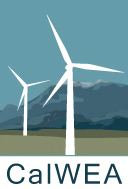PRESS RELEASE: SACRAMENTO – Contracts for California’s first wave of renewable energy facilities, built and producing power before the state first adopted its renewable energy targets in 2002, are expiring, and many facilities are in danger of shutting down because they are locked into low prices.
Legislation authored by Sen. Bob Hertzberg, D-Van Nuys, aims to prevent this from happening by allowing small renewable facilities to renegotiate contracts with utilities at fairer prices. SB 1299 was passed Tuesday by the Senate Energy, Utilities & Communications Committee and goes next to the Senate Appropriations Committee.
“California has ramped up production of new renewable energy to meet its climate goals. That’s the good news,” Hertzberg said. “But the bad news is many existing renewable energy facilities are being forgotten. We must find a way to keep all our facilities operating and in good repair.”
Virtually all renewable energy projects operating in California prior to the adoption of the Renewables Portfolio Standard (RPS) in 2002 were developed under the federal Public Utility Regulatory Policies Act (PURPA) law. Under PURPA, California added more renewable energy than any other state – approximately 5,000 megawatts (MW) of geothermal, biomass, and wind generation – and almost all of that is still in operation today.
Unfortunately, many of these contracts have expired. As a result, many California renewable energy landmarks, such as the San Gorgonio Pass and Altamont Pass wind farms, are deteriorating because the standard contract prices are insufficient.
“Providing a sufficient and fair price will ensure these facilities continue to generate renewable energy, support local jobs, pay local taxes, and remain available to help achieve higher RPS goals when the time comes,” Hertzberg said.
The bill is sponsored by the California Wind Energy Association.
"We know that California will need a lot of wind energy to meet its 2030 greenhouse gas reduction goals most cost-effectively,” said Nancy Rader, Executive Director of the California Wind Energy Association. “This bill will help ensure that the projects we've already got remain viable for when they are needed."
